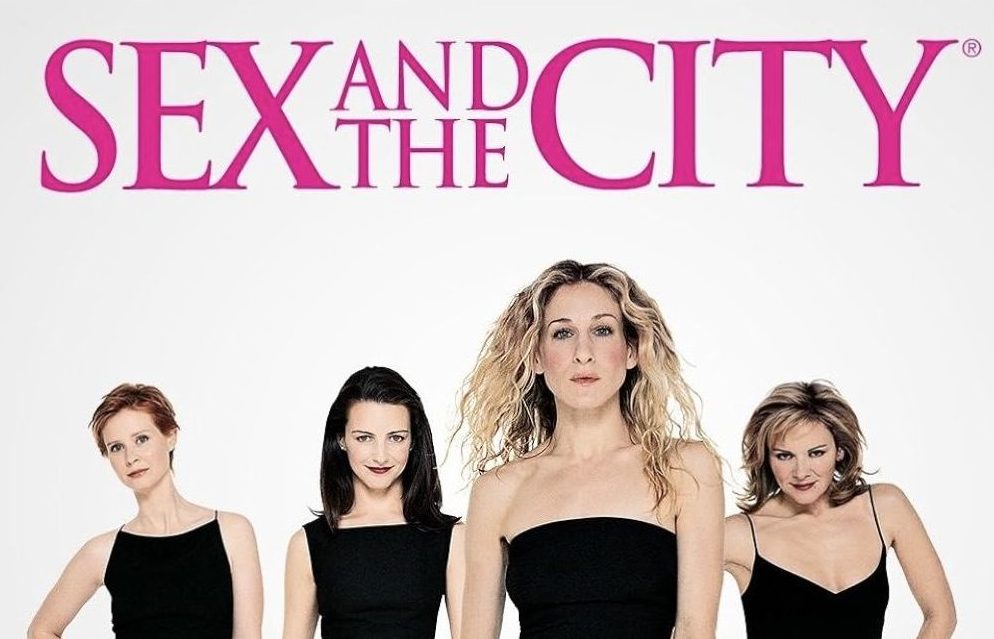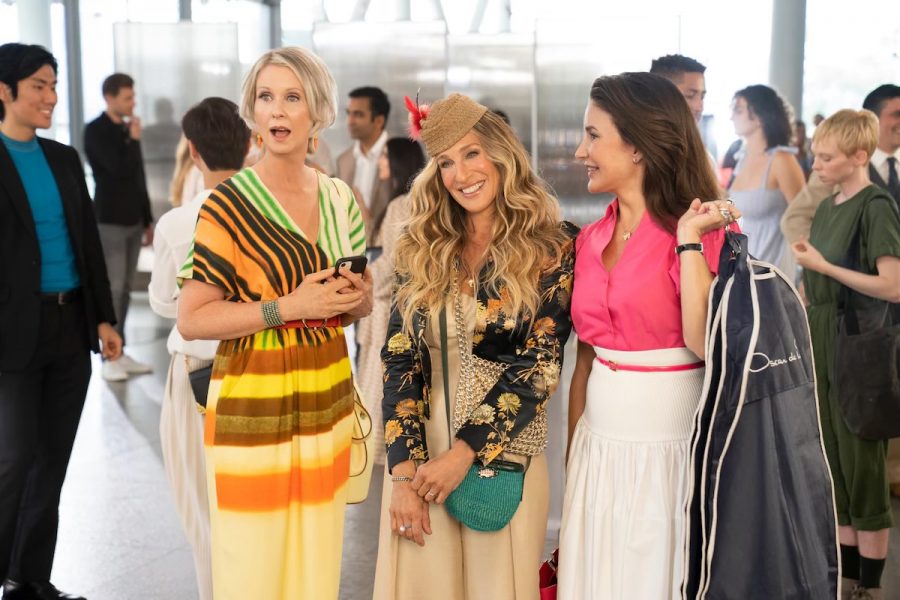When “Sex and the City” (SATC) first aired in 1998, it was groundbreakingly sexy, provocative and undeniably progressive. Created by Darren Star and adapted from Candace Bushnell’s real-life column and book, the show follows four successful women navigating relationships, careers and friendships in New York City. The series lasted six seasons with 96 episodes and ended in 2004, but it remains deeply relevant. SATC still provokes questions about love, success and fulfillment — questions that remain just as relevant today. Since its addition to Netflix last spring, the show continues to attract a new generation of viewers who see themselves reflected in its flawed, searching characters: women exploring what fulfillment means in a world that doesn’t offer easy answers, all with a heavy dose of designer fashion.
It would be easy to say the series has endured because of its fabulous fashion, witty dialogue and sharp portrayal of female friendship, but SATC is not just a time capsule of late ‘90s excess. The show presents a different narrative for women — one that isn’t centered on perfect love stories, but on the idea that finding fulfillment is an evolving journey. This power is not in its aesthetics but in its insistence that fulfillment can take many forms, and those forms can change over time.
The myth of the “happy ending”
Even as it presents us with whirlwind romances, SATC resists the fantasy that love is a destination rather than a journey. Carrie, Miranda, Samatha and Charlotte spend six seasons questioning whether the stories they were raised on -– the ones that promised Prince Charmings, penthouses and perfect families -– actually hold up.
“We were raised to believe that one day we’d be swept off our feet,” Carrie said in season 5 “Maybe we’re the white knights, and we have to save ourselves”
This line haunts the series and remains just as relevant today. Gen Z, much like the women of SATC, is navigating a world where traditional milestones -– marriage, homeownership, career stability -– feel increasingly out of reach or, for some, outright undesirable. The show resonates not because it answers these dilemmas, but because it dares to confront them. It challenges viewers to reflect on how personal fulfillment might look different from what they’ve been told.
The search for “having it all”
As the women of SATC chase careers, relationships and personal growth, the show subtly critiques the societal pressures that urge women to “have it all.” But is “having it all” really the key to happiness, or are we constantly redefined by what we give up and what we choose to embrace? In today’s world, SATC speaks to the heart of this question, especially for Gen Z. The pressures of career success, beauty standards and romantic relationships are all present, but the characters also confront the realization that fulfillment may not be about acquiring everything — sometimes, it’s about knowing what to let go of.
The radical act of female friendship
If SATC has a true love story, it is not between Carrie and Big, but among the four women themselves. The show’s most enduring promise is that while relationships may end, friendships endure.
“Maybe our girlfriends are our soulmates,” Charlotte said in season 4 “…And guys are just people to have fun with.”
In a world where romantic love is often positioned as the ultimate goal, this sentiment remains quietly radical. For Gen Z — who increasingly prioritize friendships and chosen family structures over traditional partnerships — SATC’s portrayal of female intimacy feels prescient. Its vision of women supporting, challenging and at times, failing each other, but always returning, is not just comforting; it is aspirational. It reminds us that, in the end, strong friendships are a foundation that, while not perfect, provides the most profound sense of fulfillment.
Sex, power and owning the narrative
Samantha Jones remains SATC’s most enduring enigma. She is both revered and reviled. “I love you,” she tells a man in the final season, “but I love me more.” This declaration is a radical rejection of the idea that a woman’s fulfillment must be tied to someone else.
Samatha’s unapologetic ownership of her sexuality and independence prefigured the sex-positivity movement, but it also exposed the limits of how society is willing to accept single, child-free women. Even within the world of SATC, she is often portrayed as an outlier, someone whose choices are fascinating but ultimately temporary — an experiment before settling down. Yet in the years since the show aired, as more women have chosen lives outside traditional relationships, Samantha’s character has become less of a cautionary tale and more of a guidepost.
Her fierce independence and boldness in embracing her own desires were ahead of their time, and as conversations around sex, power and autonomy evolve, Samantha remains a symbol of personal agency in a world that often asks women to shrink themselves.
Why it still matters
Revisiting “Sex and the City” today means seeing both its flaws and its enduring brilliance. It is at times problematic — racially tone-deaf, classist and steeped in a privileged fantasy of New York City. However, even with these shortcomings, the show remains relevant because it presents a group of women who refuse to settle for anything less than their own truth. The world Carrie, Charlotte, Miranda and Samantha inhabit is often flawed, but their refusal to let the world define their happiness is timeless.
This refusal — that constant, unapologetic search for more — is exactly why “Sex and the City” continues to resonate. It doesn’t provide easy answers, and it doesn’t pretend that life, love or even friendship are ever truly figured out. Instead, it offers the reassurance that questioning, longing and evolving are not failures, but instead the very essence of what makes us human.
And just like that, “Sex and the City” remains timeless — not because it got everything right, but because it was never afraid to ask, “Is there something more?”







